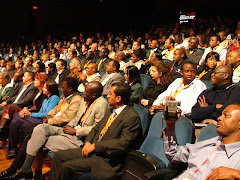According to dealers of the materials, it’s evident that used spare parts from other countries unlike Japan like India, China, Singapore, Taiwan and any other far East countries where they are manufactured under license are readily available and affordable.
Auto-parts dealers could be said to have successfully played the balancing game of offering cost-effective rates to would be their customers while selling the already used motor spare-parts. Unlike before, the service sector lacked the necessary parts for the running vehicles.

Old spare parts tyres on sale at a shop in Magomeni, in Dar es Salaam city. Second hand spare parts have become a great choice for many fleet owners.
But now it has become under such close and intense scrutiny, time is rapidly changing and the situation where providers have to set standards while consumers accept whatever is offered to public users. Dar es Salaam now is a source of a variety of second hand Auto-parts in the region since the liberalization of the sector with extra advantage of being the region’s main port where most of the parts are first landed. Dealers stock their spares for different models of Japanese vehicles ranging from 3 tones to heavy commercial vehicles. Many of these dealers can be found around Kariakoo areas and within the city’s central business district. They import and sells their accessories in retail prices of different types. With these spare parts, they are sure that their clients gets proper after sales services For any individual or firm in the transport business, the purchase of a new heavy truck is a big investment. This is so not only because the initial capital outlay is enormous, but because repairs and maintenance costs could be a major item on one’s recurrent budget. Indeed one of the major factors an individual or firm purchasing a heavy truck should always consider is the availability of spares and maintenance facilities, says Abdalah Nassor a transporter who owns a commuter bus in the city of Dar es Salaam.
In a situation such as is found in Tanzania and even in the whole of East Africa, where roads are poor and breakdowns are common, the availability of these motor spare parts and maintenance facilities cannot be overemphasized. This is because despite the bad operating conditions, a truck which is basically a commercial vehicle has to traverse long distances in such away as to retain a profit for its owner and preserve the integrity of the cargo for the client. Motor vehicle spare parts needs regular check-ups especially those on the part of an engine area. These are the most important ones because it’s where the highest danger of damages lies. Other than the engine, another spare part which should receive regular attention as far as lubrication is concerned is the gearbox. Other than the mechanical parts other motor spare parts which are old that need regular servicing and maintenance include the electrical and the breaking system, says James Maneno, a famous mechanical engineer in the city. Since most importers are also involved in the business of packing, shipment, clearing and forwarding transportation, they have at their disposal a large variety of skilled manpower leading to quick shipment and clearing of goods from Dar es Salaam port. According to one shopkeeper who spoke of strict condition of anonymity, the business is overshadowed following the mushrooming of many shops in the city. He says they have to order their spare parts for sale directly from Japan and Dubai Oman.




















